Miranda Nelson, Elijah M. Walker, Gaervyn Salverda, Dr. Tyler N. Brown
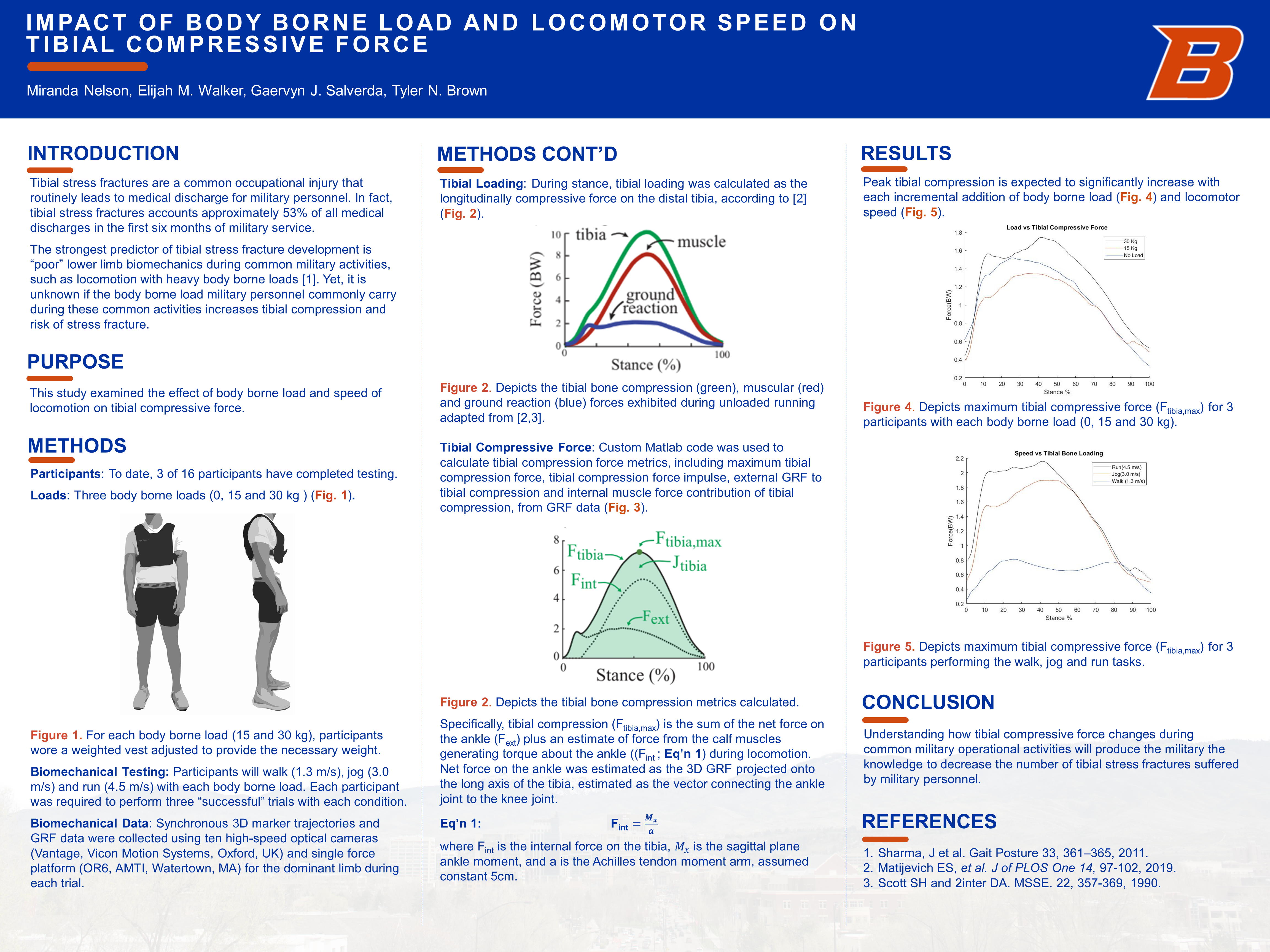
Introduction
Tibial stress fractures are a common occupational injury that routinely leads to medical discharge for military personnel. In fact, tibial stress fractures accounts approximately 53% of all medical discharges in the first six months of military service.
The strongest predictor of tibial stress fracture development is “poor” lower limb biomechanics during common military activities, such as locomotion with heavy body borne loads [1]. Yet, it is unknown if the body borne load military personnel commonly carry during these common activities increases tibial compression and risk of stress fracture.
Purpose
This study examined the effect of body borne load and speed of locomotion on tibial compressive force.
Methods
Participants:
To date, 3 of 16 participants have completed testing.
Loads:
Three body borne loads (0, 15 and 30 kg ) (Fig. 1).

Biomechanical Testing:
Participants will walk (1.3 m/s), jog (3.0 m/s) and run (4.5 m/s) with each body borne load. Each participant was required to perform three “successful” trials with each condition.
Biomechanical Data:
Synchronous 3D marker trajectories and GRF data were collected using ten high-speed optical cameras (Vantage, Vicon Motion Systems, Oxford, UK) and single force platform (OR6, AMTI, Watertown, MA) for the dominant limb during each trial.
Tibial Loading:
During stance, tibial loading was calculated as the longitudinally compressive force on the distal tibia, according to [2]
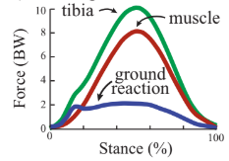
Tibial Compressive Force:
Custom Matlab code was used to calculate tibial compression force metrics, including maximum tibial compression force, tibial compression force impulse, external GRF to tibial compression and internal muscle force contribution of tibial compression, from GRF data (Fig. 3).
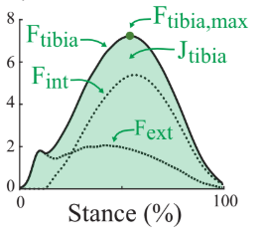
Specifically, tibial compression (Ftibia,max) is the sum of the net force on the ankle (Fext) plus an estimate of force from the calf muscles generating torque about the ankle ((Fint ; Eq’n 1) during locomotion. Net force on the ankle was estimated as the 3D GRF projected onto the long axis of the tibia, estimated as the vector connecting the ankle joint to the knee joint.
Eq’n 1: Fint =/
where Fint is the internal force on the tibia, is the sagittal plane ankle moment, and a is the Achilles tendon moment arm, assumed constant 5cm.
Results
Peak tibial compression is expected to significantly increase with each incremental addition of body borne load (Fig. 4) and locomotor speed (Fig. 5).
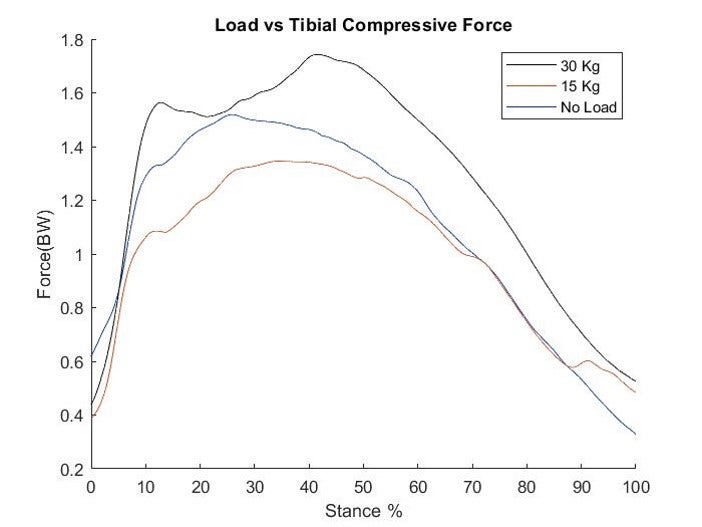
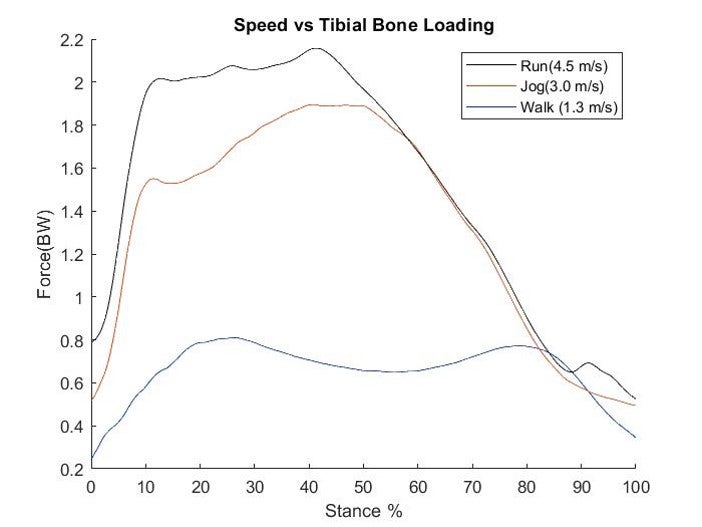
Conclusion
Understanding how tibial compressive force changes during common military operational activities will produce the military the knowledge to decrease the number of tibial stress fractures suffered by military personnel.
References
- Sharma, J et al. Gait Posture 33, 361–365, 2011.
- Matijevich ES, et al. J of PLOS One 14, 97-102, 2019.
- Scott SH and 2inter DA. MSSE. 22, 357-369, 1990.
Additional Information
For questions or comments about this research, contact Miranda Nelson at mirandanelson218@u.boisestate.edu.